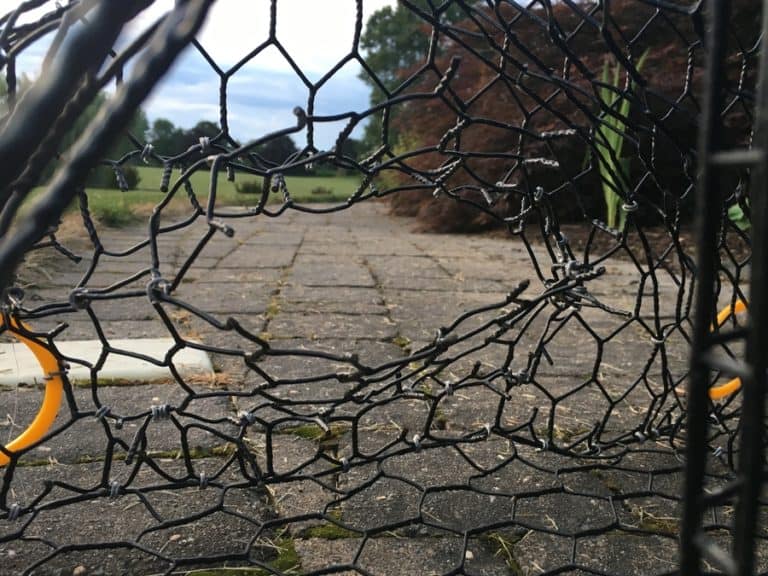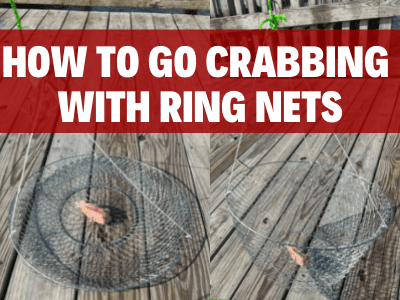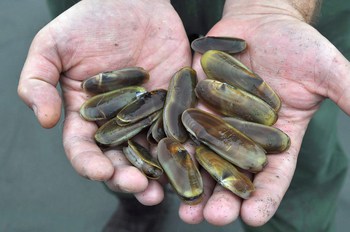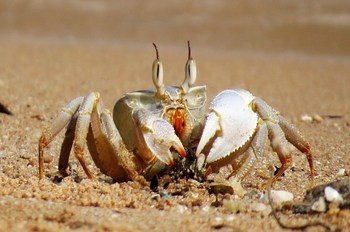How to Transport Live Crabs (in 8 Easy Steps)
Every crabber knows that catching crabs is only half the battle. Getting them to your dinner plate is a whole different ball game! I’m here to tell you that getting crabs from the water to the steamer is not a very hard task. I put together this guide with 8 easy and repeatable steps for transporting live crabs.
Find a cooler, ice, and a few old towels.
You’re going to need an appropriately sized cooler to hold your crabs, a few bags of ice or ice packs, and at least 2 old bath towels. Keep in mind that whatever you use for this guide will smell like crabs indefinitely, so be warned.
Your cooler size depends on how many crabs you plan on transporting. Whichever you end up using will never smell like anything but crabs again, so I wouldn’t use your beloved Yeti Cooler. I recommend finding a cooler that’s dedicated to transporting and storing crabs. As I said, it will always smell like crabs, so you won’t be storing drinks in it any time soon.
Be sure to pick a cooler that’s cheap and has a drainage plug at or near the bottom. The drain plug is very important for transporting crabs.
I personally use the relatively inexpensive Coleman Cooler (Amazon Affiliate Link). I linked to the 48qt size, which will comfortably hold about 2 dozen or so decently-sized blue crabs. That amount works for me when I go crabbing.
If you plan on transporting more crabs, you will need a larger cooler.
The Igloo cooler (Amazon Affiliate Link) is your larger and pricier option. it’s cheaper than most larger-sized coolers but still does its job. I linked to the 120qt size, which will store about a bushel of blue crabs.
| Cooler Size | How many blue crabs will it hold? | Buy these coolers (affiliate links) |
| 30 to 45 quarts | 1 dozen crabs | Coleman 36 qt Cooler |
| 45 to 60 quarts | 2 to 3 dozen crabs | Coleman Performance Cooler |
| 60 to 80 quarts | Half a bushel of crabs | Igloo Marine Ultra Cooler |
| 120 quarts | 1 bushel of crabs | Igloo Polar Cooler Family |
Line the bottom of the cooler with 2 inches of ice.
Once you have your cooler choice, you’re ready to get started. Take your ice and evenly spread it along the bottom of your cooler. You want at least 2 inches of ice to cover the bottom.
This will chill the crabs during transport, rendering them inactive and putting them in a sort of deep sleep. This will both keep your crabs alive and preserve their meat for cooking.
For this step, you need to remember to use your better judgment. If you’re transporting crabs during an extremely hot day, it may be better to use even more ice. The same goes if the cooler is on a trailer or truck bed and will be exposed to the sun during transport.
If you plan on transporting your crabs inside of a vehicle you should use ice packs instead of ice. The ice is going to melt during transport regardless of what you do. To avoid soaking the inside of your car, use ice packs instead.
Open the drain plug at the bottom of your cooler.
This step is critical for those using ice to keep the crabs cool. When the ice inevitably melts, we do not want it to accumulate at the bottom of your cooler.
This will eventually submerge your crabs in chilly water. Not only will this water be too cold for your crabs to survive, but those who do will deplete the oxygen from the water very quickly. This will cause your crabs to suffocate.
Pulling the plug will allow your cooler to drain any melted water. If you decide on a cooler without a plug, keep a mental note to drain the water every so often. I’ve heard of a few people who have built a shelf inside of their cooler to keep the crabs suspended above the ice water, but I think a cooler with a drain is just plain easier.
If you are using ice packs instead of ice, you won’t have to worry about this step.
Cover the ice with a few old bath towels.
It’s been found that crabs who are stored in direct contact with the ice will not survive. The sheer cold of the ice is too harsh. A simple solution is to cover the layer of ice with one or two old towels. Like your cooler, these towels will never smell the same again, so pick a towel you don’t mind ruining.
This will keep your crabs out of direct contact with the ice while keeping your cooler cool and moist. This simple trick creates the perfect environment for crabs to survive out of the water for long periods of time.
Gently place your crabs on top of the towels.
You’re finally ready to add your crabs to the cooler. This step is pretty straightforward: gently place crabs on the towels which line the bottom of your cooler. To make sure the most possible crabs survive, it’s important to not place them upside down or stack crabs on top of one another.
This can make for a tedious process. I can’t imagine the crabs are excited to be stored in a cooler, so they may get reckless. I’ve seen a few people submerge crabs in ice water for 20 seconds or so to slow them down and make this process easier, but I imagine this will cause a few crabs to die of shock. Because you did such a good job of preparing your cooler, your crabs will eventually slow down after being placed in the cooler, so don’t worry about it.
To avoid getting pinched, I recommend using tongs (Amazon Affiliate Link) to place the crabs inside the cooler. I’ve found that rubber-lined tongs have a better grip on crabs.
Leave the cooler lid ajar while crabs are inside.
You’re almost ready to transport your freshly caught crabs! Beforehand, you need to make sure your crabs have plenty of fresh air.
If you close the lid of your cooler, your crabs may suffocate. To avoid this, you need to make sure the lid stays slightly open to allow air to circulate through the cooler. I’ve found that laying a towel over the edge of the top of your cooler so that it gets in the way of your lid closing does a perfect job.
Keep crabs for up to 24 hours or until ice melts.
You are ready to transport your crabs! They will stay fresh for 24 hours, which should be plenty of time to get the crabs from the water to your steamer. Just make sure to cook and eat the crabs within 24 hours.
If your cooler is exposed to sunlight while being transport, I recommend laying a towel or piece of fabric over the top of the cooler. This will deflect direct sunlight on the cooler.
Remove any crabs that perish during transport.
At this point in the guide, I assume you got the crabs from point A to point B and you’re ready to cook them. They should be limp and slow-moving after being in such a cool environment for a long period of time. It may be confusing to pick apart the live crabs from dead ones.
A trick I’ve found for this scenario is to dump the crabs and let them soak in some sunlight for a few minutes. The live crabs will start to move and try to run off, those go in the steamer. I would limit this process to a few crabs at a time to prevent them from running off.
This has saved me from cooking many dead crabs in the past. If you follow this guide, you shouldn’t have too many dead crabs after transport regardless.




